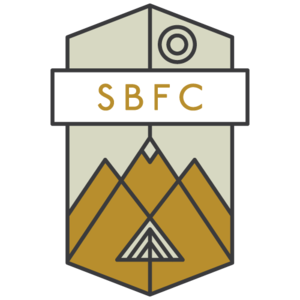Wilderness Classroom
Jim Ekins- University of Idaho Service Learning Coordinator
Photo by Jim Ekins
I had only been in my job as University of Idaho’s Service-Learning and Internship Coordinator for a few months when the then Executive Director of the Selway Bitterroot Foundation (later, Selway Bitterroot Frank Church Foundation), Rob Mason, and one of the SBFC board members and Natural Resources College faculty colleague, Ed Krumpe, approached me about a unique and interesting problem.
Near Moose Creek was an inholding called the Seminole Ranch that had recently been purchased by the US Forest Service (USFS). On closing day, the owners literally set their empty coffee cups down on the dining room table and departed by aircraft or mule. The family left behind all the things not deemed valuable enough to pack out. This included about 100,000 pounds of myriad mattresses, old equipment, paint cans, car and tractor parts, and even old food that had become habitat for packrats and other critters.
The challenge was to find a low-cost team of young people with strong backs to help pack all that “trash” to the Moose Creek airstrip, about a mile away, to be flown out by fixed wing aircraft. Hearing about this interesting challenge, I decided to develop a Wilderness Service-Learning Internship summer program, and recruit students to spend three weeks camping in the wilderness to learn about the nature of wilderness, wilderness management, and of course to assist with the cleanup as an academic service-learning project. The project included on-campus orientation to the history of wilderness in the United States, a discussion with College of Natural Resources faculty members about the Wilderness Act of 1964, a tour of the Palouse-Clearwater Environmental Institute’s Nature Center, and a half-day visit to the Nez Perce National Historic Park Visitor Center in Spalding, ID. (Read more about the program here.)
Photo by Jim Ekins
I found one single student interested in the project, so decided to run the program anyway as a pilot program. With help from the SBFC Wilderness Ranger Interns [now Fellows], a hired professional packer, and USFS Wilderness Rangers, we removed over 37,000 pounds (16 tons) of trash from Seminole Ranch during the 2010 summer semester.
I continued to run the Wilderness Service-Learning Internship program for three more years. During the 2011 summer semester, students did hundreds of feet of trail restoration along White Cap Creek, historic structure maintenance on Cooper’s Flat Cabin, a historic guard station, and several miles of trail brushing and clearing of logs. In July 2012, a group of three interns joined me for a 17-day hitch to Shearer Guard Station along the Selway [for trail clearing]. In 2013, I was transitioning to a faculty educator position with University of Idaho Extension, so I handed the program off to Joe Roberts, an incredibly capable AmeriCorps member who led a group of five students and other AmeriCorps members to do trail work in the Frank Church-River of No Return Wilderness.
Photo by Jim Ekins
We pursued this service-learning course as a solution at the intersection of several needs associated with wilderness management. Our students are the future leaders in environmental preservation. Students spend three weeks in the shoes of wilderness managers, and they personally felt the magnitude of the issues they must face. It is difficult to replicate this in a classroom setting. The real innovation was that this type of intensive service-learning project had not been tried before in a wilderness setting. Western U.S. wilderness areas are so large that the Forest Service and SBFC concluded that only a group of volunteers working intelligently for multiple weeks could make meaningful progress.
Our service-learning students built a deep understanding of the complexities of environmental preservation with our combination of on-campus intensive orientation, field lectures, hands-on service, and structured reflection activities. Our students learned as much through this project as through a regular 16-week semester. We served multiple audiences, including backpackers, rafters, stock packers, hunters, etc., who are already finding the wilderness more pristine and accessible. With the service provided by the students and instructors, Forest Service personnel have greater latitude to prioritize resources to tackle other, more specialized problems within the wilderness. Wilderness managers, university conservation social science faculty members, service-learning students, and nonprofit environmental preservation organizations enjoyed the fruits of this new partnership, and a new model for weaving together learning and stewardship.
ABOUT JIM EKINS
Jim Ekins working a crosscut saw in the Selway-Bitterroot Wilderness.
Photo courtesy of Jim Ekins
Jim Ekins is the Water Educator for U-Idaho Extension. He develops non-formal education programs based on the best available science to all parts of the community. Jim runs the IDAH2O Master Water Stewards citizen science water quality monitoring program, and co-leads Idaho Project WET (Water Education for Teachers). He has worked with the University of Idaho since Fall 2007.
He earned a bachelor's in Natural Resource Management from Western Carolina U., and a Masters in Natural Resource Planning from U. Oregon. He was a ranger in three National Parks, worked in Colorado and Oregon’s resort industry, spent two Austral summers on a research base in Antarctica, and worked in wetland restoration for watershed councils in Oregon and Idaho. Before transferring to the U-Idaho Extension Faculty, he directed U-Idaho’s Service-Learning and Internships program. Jim has a PhD in Conservation Social Sciences in social-systems resilience; he also canoes, tele-skis, runs, and backpacks with his dogs, and will play a round of golf from time to time.




